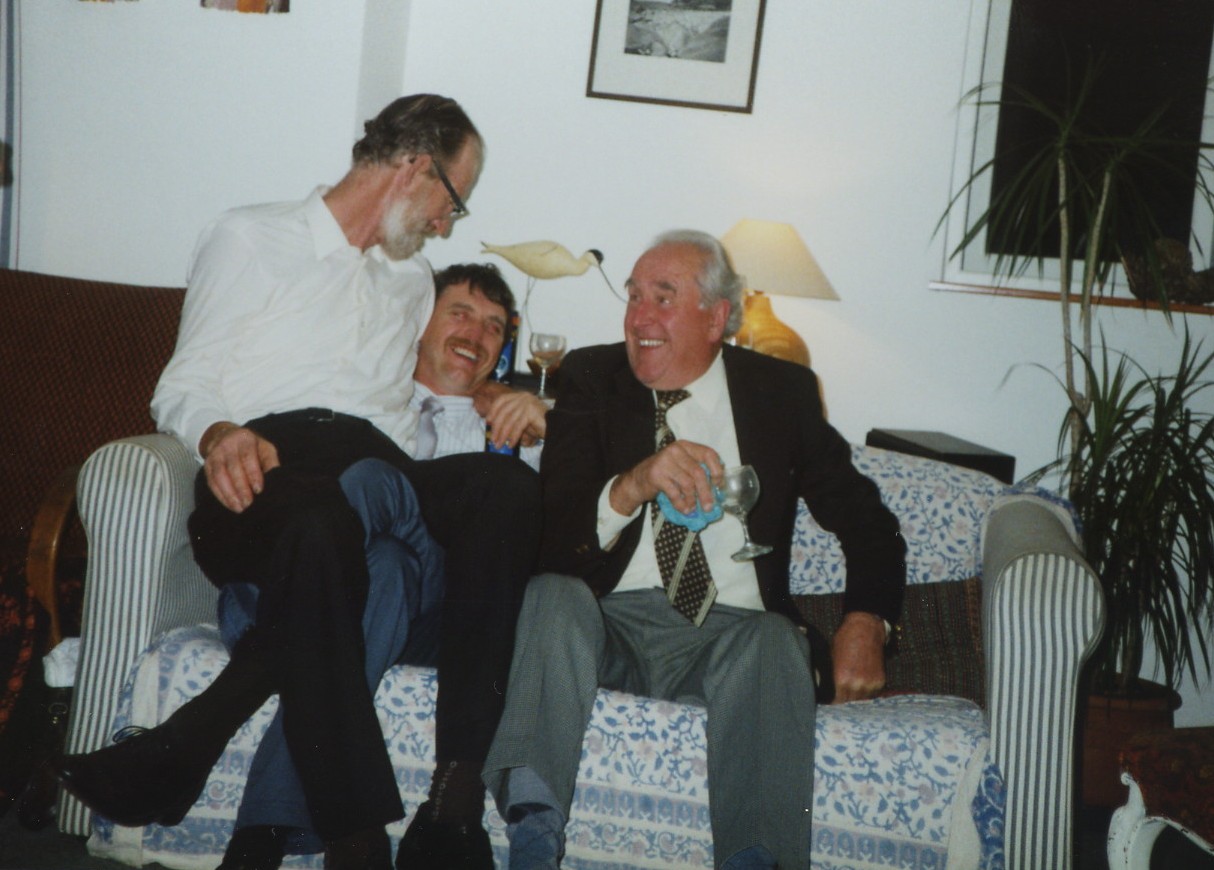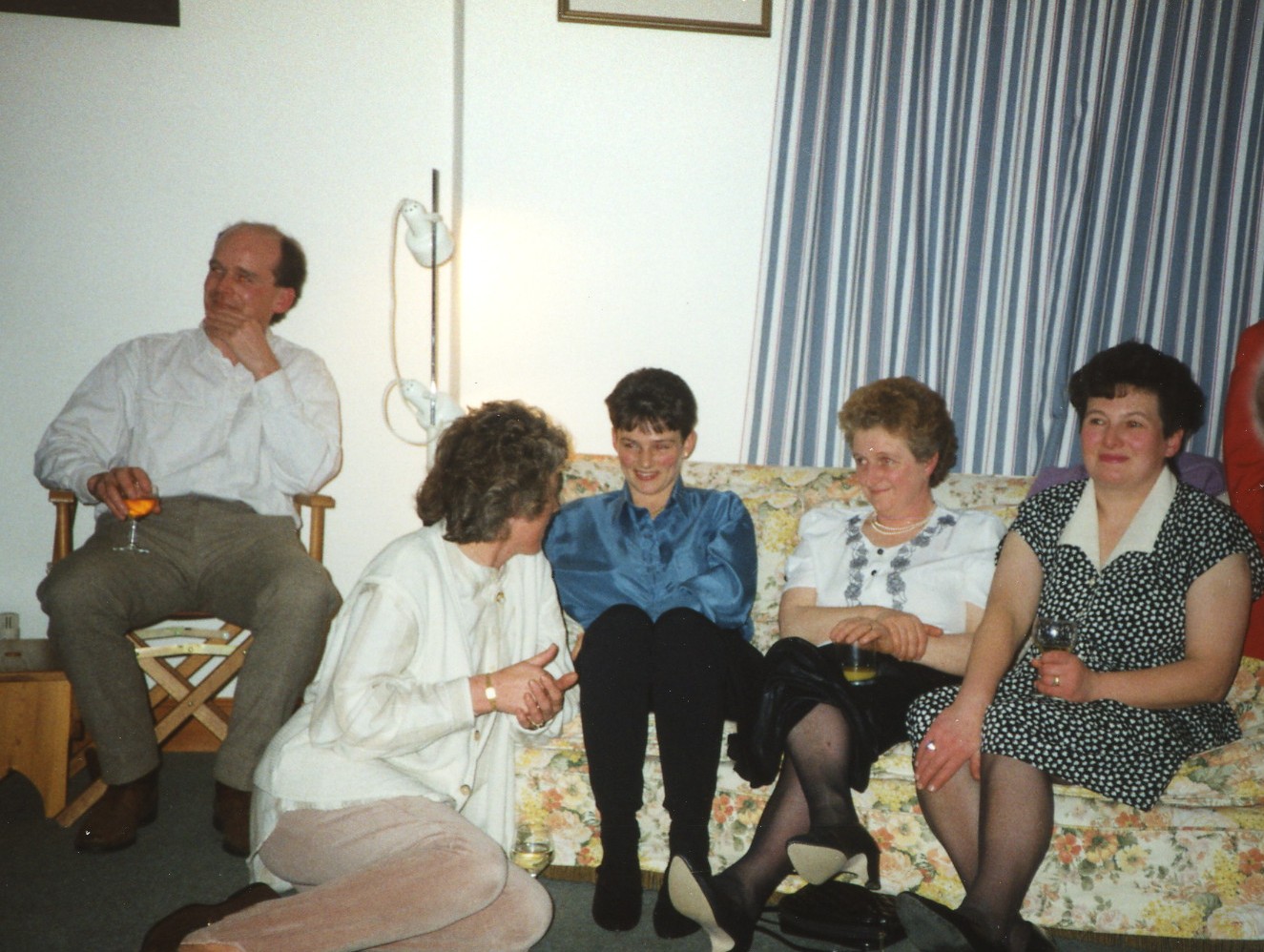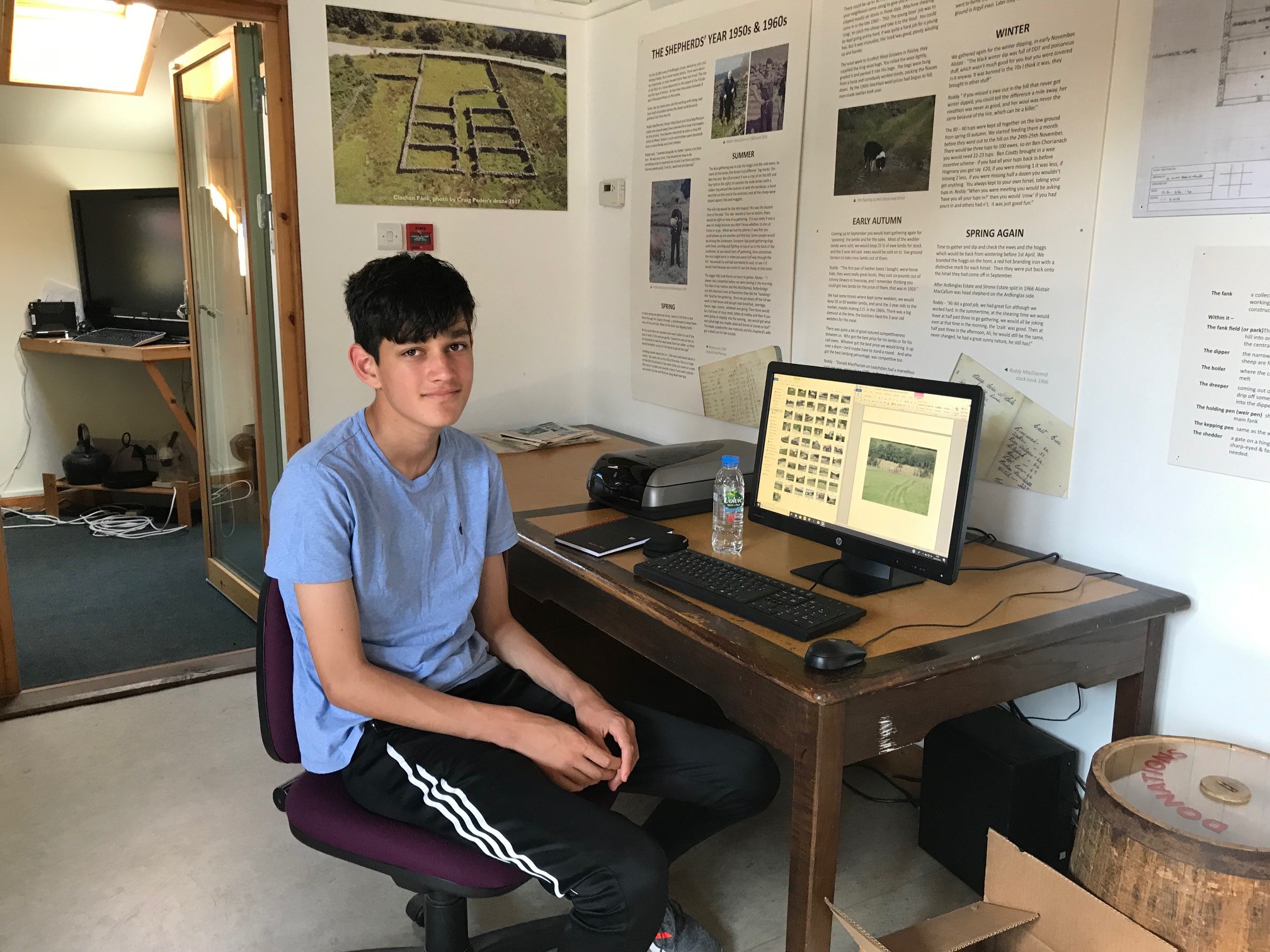Rubha Beag | 9 occupants (1991 - 2016)
Rubha Beag
i. General
We are at Rubha Beag, pronounced Rua beg or otherwise Ruba Beg according to John, or possibly Roobeg.
Rubha Beag was built around 1990s to a design by David Sumsion. The house is lived in by Alexander and Ketki Miles The building is approached from the east via a gravel drive, curving up from the shore road and the house itself lies within open lawn. There is a gravelled forecourt area at the east end of the building and a timber-built wood store, shed and open car bay to the north-east. This is newly built in about 2008.
ii. External elevation
Rubha Beag is a two storey house, roughly oriented parallel to the loch, approximately on an east / west axis, which means the long sides are facing north to the loch and south to the rising ground (N.B.: for the purpose of this report, the orientation of the loch is seen as east / west, thus the long shores are on its southern and northern sides). In plan the building forms a slightly elongated rectangle with a notable apsidally planned end to the west. The building lies beneath a single roof structure. The roofing slates are of presumably salvages Scots slate. This is gabled to the east and sweeps around the apsidal end, over to the west. The apsidal end is detailed in the manner of many 18th century estate buildings, as at Inveraray, for example. The apse is differentiated from the main house by a short recess that step backs on either side. The building is harled in cement externally and this is painted a creamy white overall. All of the window openings are defined by narrow, raised margins formed up. The windows within are simply detailed throughout, painted a pale greyish blue. Rainwater goods over the harl are painted the same colour as the harl but are painted black at the eaves. There is a single masonry chimney offset towards the west end of the peak of the roof. On the north pitch there is also a stainless steel AGA vent rising up from the mid point of the roof pitch.
Though the window arrangement on the north and south walls is somewhat irregular, overall it is basically of three bays excluding the apse. The apse itself is more regularly arranged with three large windows at the ground and first floor levels. These are all symmetrically arranged. On the south side and in the mid point of the elevation there are ground floor patio doors that are broad with flanking windows and further windows beyond. At first floor level there are four relatively regularly organised windows.
The building is entered at its east end in the centre of the gable wall where there is a canted wooden porch of single storey. This is built on a concrete footing of wood walls painted the same pale grey as window woodwork. Above this at first floor level there are paired windows, also symmetrically arranged. On either side of the porch at ground floor level there are hemispherical yard lights that appear to have a black surrounds.
iii. Interior – Ground floor
The porch area is floored in slate inside. There is a small closet off to the east, a boot room. The porch leads into the main house via a pine screen glazed above with a central door. This gives access into a small hall area. Immediately to the north, there is a small bathroom and toilet. To the north-west there is a stair angling up round to the west. To the south-west the passage leads to the main part of the ground floor of the house. The walls throughout are cleanly detailed, plastered in a soft pale yellow. The skirting’s below are all of varnished pine, as is the door furniture. The door to the boot room and the downstairs toilet are four-panelled, all in pine again. The flooring throughout is of wooden parquet boards which appear to be beech.
On the north side of the passage to the south there is a small press and immediately beyond this is the entrance into the kitchen. All architraves are roll moulded, the narrow quirked roll mould within and the ogee mould on the outer side. The kitchen occupies the whole of the central part of the ground floor of the house; a large commodious room. French Doors lead out on the south side into the garden. There are kitchen units along the north side of the room and the north-west side and there are a series of two press cupboards on the north-east side. An entrance at the south-east corner leads into the drawing room.
A short flight of three pine steps leads down into a slightly lower level. This room occupies the east end of the house including part of the main rectangle and the entirety of the apsidal end. In the centre of the east wall there is a fireplace with a slate hearth and a simply detailed rectangular cast iron fire within. The fire itself is surrounded by two hand-painted majolica Spanish tiles. These are of plain blue within and then a further series that are patterned with stencilled designs without. On either side of the chimney breast there are book shelf recesses, those on the north side with panelled doors below. These shelves rise up to a continuous mantelshelf that runs over the fireplace. Both the kitchen and the drawing room are detailed with a moulded strip towards the wallhead at picture rail level. The inside of the apsidal end is angled. The low walls in this room are painted a very pale apricot. The ceiling is white and the kitchen throughout is white. The apsidal room is carpeted.
iii. Interior – First floor
The staircase rises up through a shorter angle and then a straight flight to the west. This leads to an upstairs landing area which runs westwards from the head of the stair. This narrow passage provides access to the western parts of the first floor. The west end of the upstairs area is occupied by a single bedroom, as the living room below within the apsidal end. The walls are painted yellow, pine finish and trim rising up to a pine varnished picture rail, pale ceiling. The ceiling itself is slightly coombed up into the roof space. This bedroom is entered at its north-east corner from the upstairs passage. At its south-east corner there is a further door leading to a small bathroom with simply appointed white ceramic sink, toilet etc. A cast iron bath is placed along the north-east side of the room.
On the south side of the upstairs passage at its west end, there is a small recess that leads to two press doors, one containing the boiler and the other a wardrobe. At the head of the stairs the landing area leads to a series of four further rooms. To the south-east is a further main bedroom. This is simply appointed, the ceiling part coombed on the south side and a window to the south. There is a bathroom on the south side of the landing, entered to the south-east. This has been painted yellow inside, the bath running along the south side of the room, of white enamel, cast iron, white ceramic sink and toilet. There is a smaller bedroom further to the south-east. This lit by windows in the south and east walls. The walls are painted pale yellow within, the room is simply appointed. At the east end of the stair landing there is a small office room as well. This is lit by windows in the north and east walls; again simply appointed within, coombed ceiling on the north side. At the stair landing area, between the entrances on the south side, there is a small recess and there is a stair balustrade that is backed by shelving on its south side. Again throughout all the woodwork is varnished pine with raised and fielded panels within the doors and very cleanly detailed throughout.
Above the landing there is a hatch to a small restricted loft area. The loft area is fairly insubstantial, the roof being of relatively low pitch. Internally all the window frames are very simply detailed with narrow rounded inner angles, all painted white throughout, the sills are varnished pine throughout. These project slightly and have a rounded nosing. The skirting’s throughout are detailed with an ogee moulding.

















